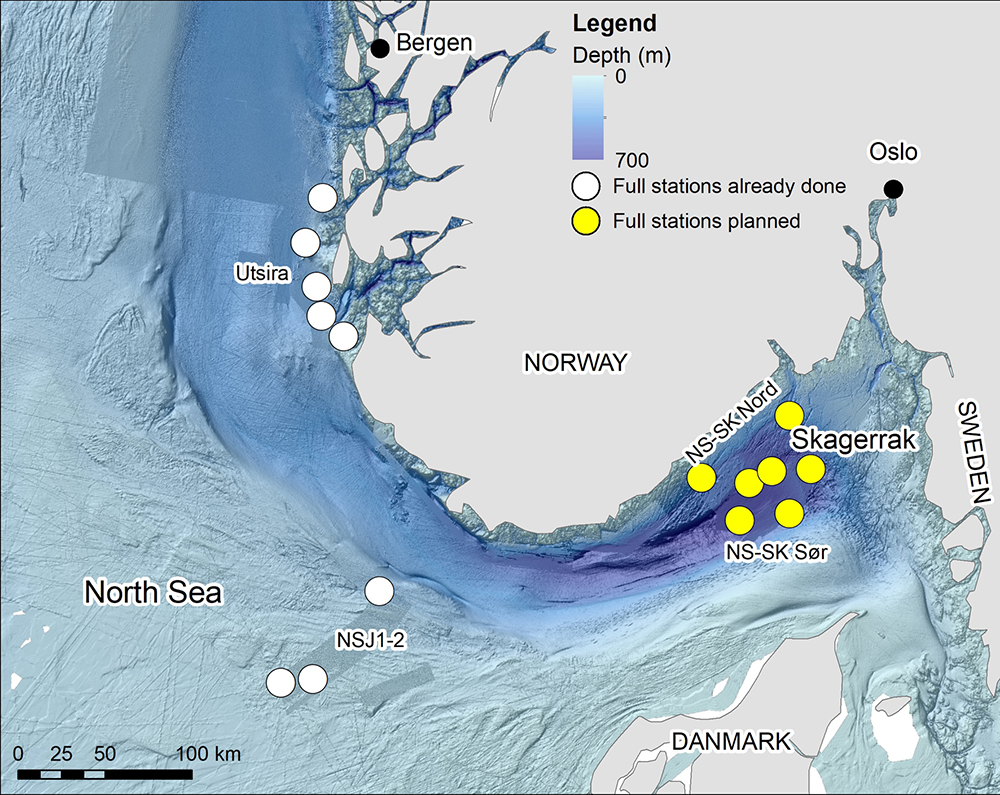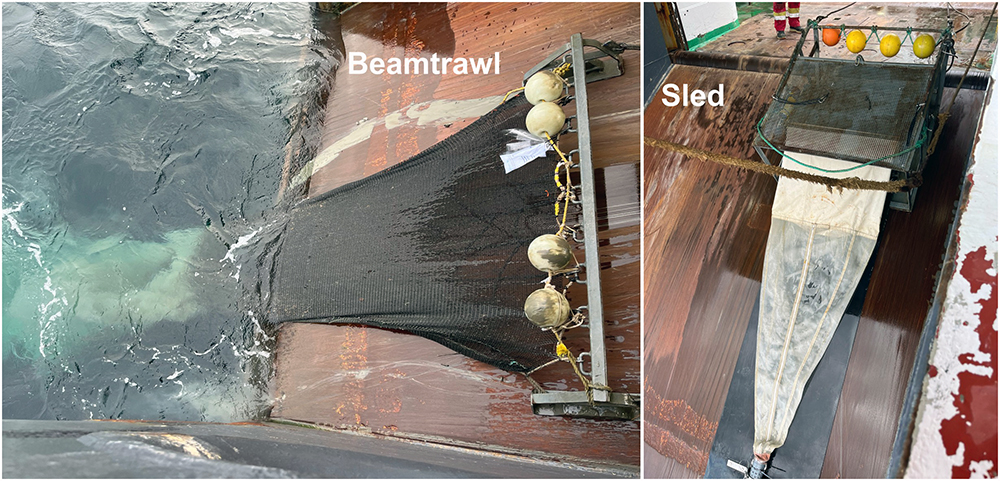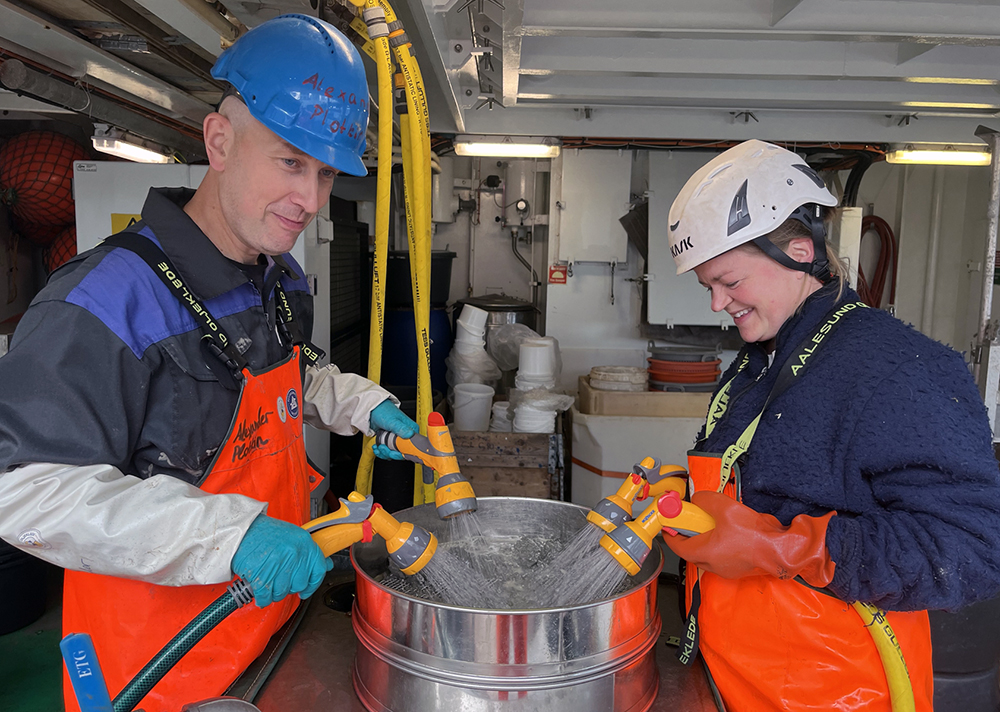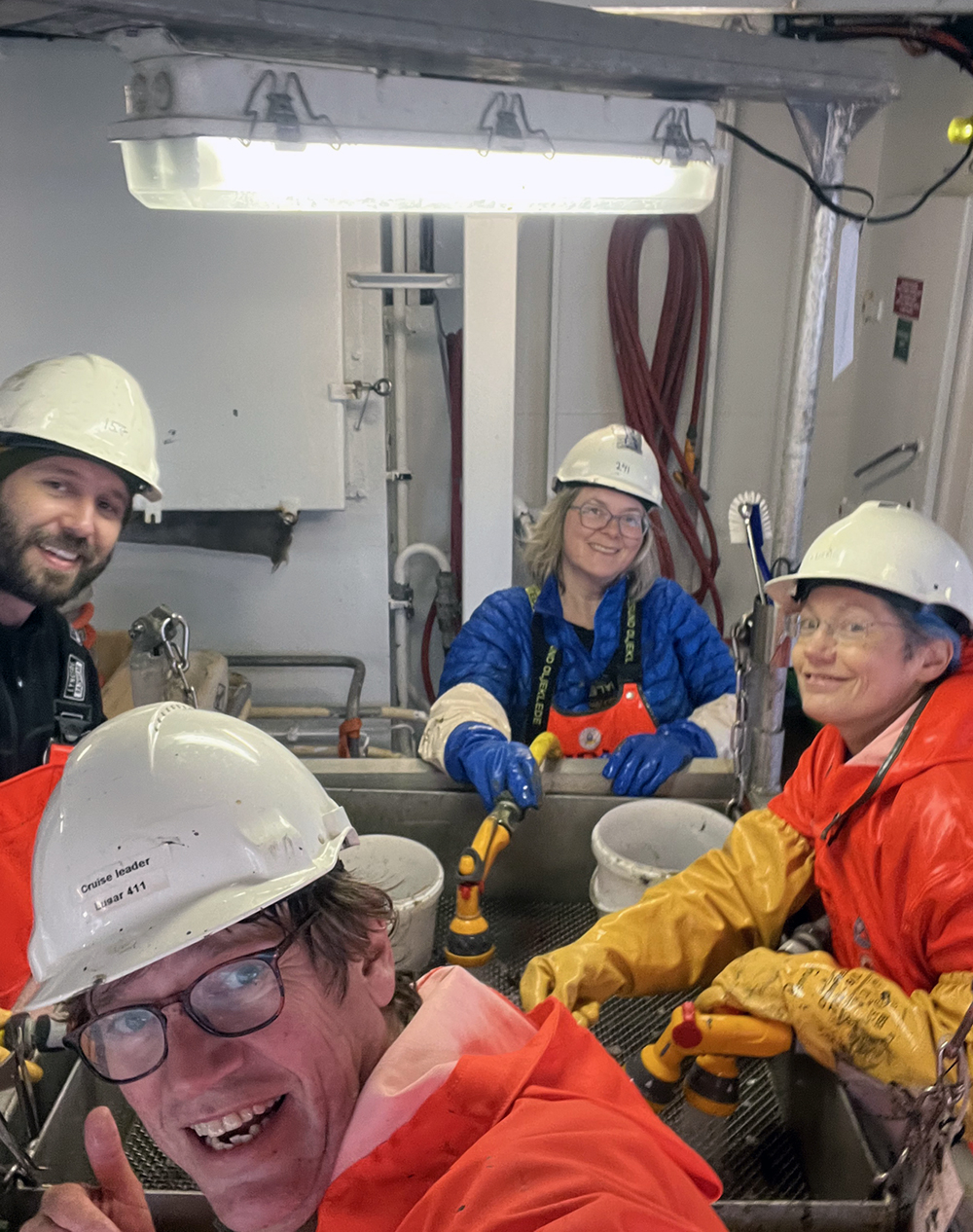
View of Stavanger from «G.O. Sars» during one night shift.

View of Stavanger from «G.O. Sars» during one night shift.
Published: 07.07.2023
The second MAREANO cruise happens between the 3rd and 17th July and will cover 3 areas in the North and Skagerrak Seas, from Utsira in the west, to NSJ1-2 in the south and NS-SK Nord and Sør in the east (NS-SK: Nordsjøen Skagerrak).

Its main purpose is to complete the sampling of full stations. Full stations are areas where a suite of different gears is used to observe more in details the seabed and its inhabitants. The first gear we use is the video-rig Chimaera, which has already been done in Utsira and NSJ1-2, during the successful Easter MAREANO cruise earlier this year. It provides qualitative field observations of species, communities and sediments on the seabed, and video records for later quantitative analysis of the same. To get a more precise idea of what we can see, biologists, geologists and chemists deploy additional types of gears.
Two types of additional gears are used: Firstly drop-gears (grab, boxcorer and multicorer). With these, we study a small portion of the seafloor, which gives us more information about sediment grain size (sandy mud or muddy sand? A very important question when you are a geologist), benthic animals on top or slightly below the seabed (when they do not try to escape the sieves) but also indications of the chemical and plastic pollution (do not wear a fleece when sealing the cores! They also contain plastic).
The second type of gears is the towed gears used by the biologists. The beamtrawl give information about the largest animals on the seafloor (epifauna) like starfishes, sea urchins or sea cucumbers. The hyperbenthic sled collects the small animals swimming just above the surface (hyperbenthic fauna). These animals are an important food source for many fish species.




Right now, four days into the cruise, we have finished the stations at Utsira and the NSJ1-2 area and are on the way to the deep and muddy NS-SK Sør area in the middle of the Skagerrak.
Have a nice summer!